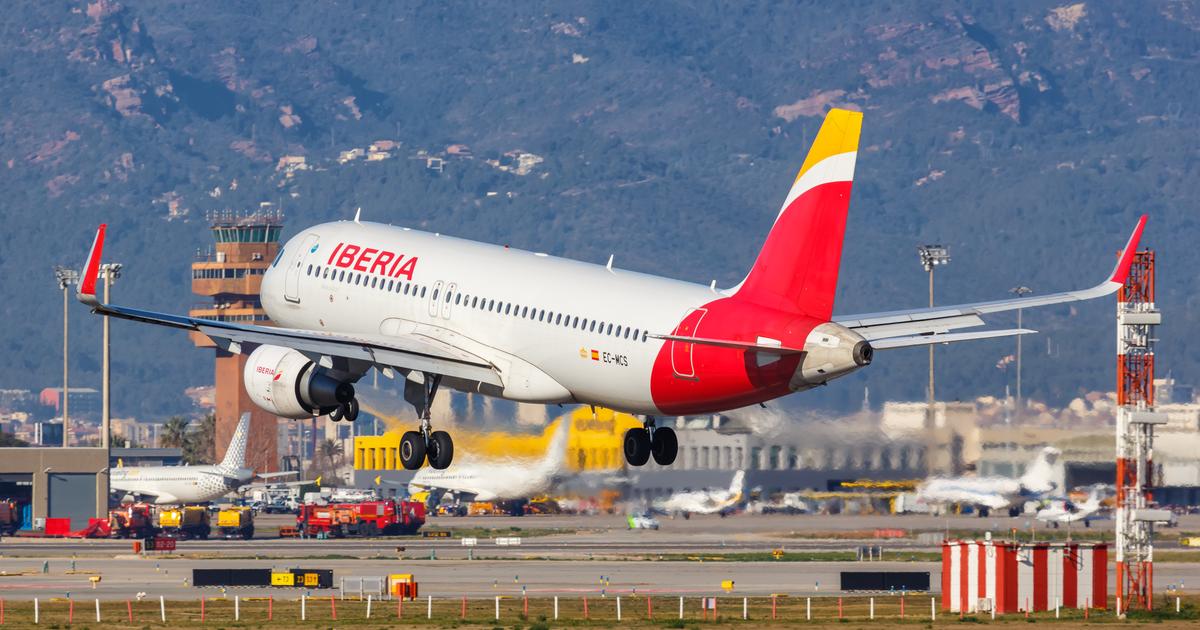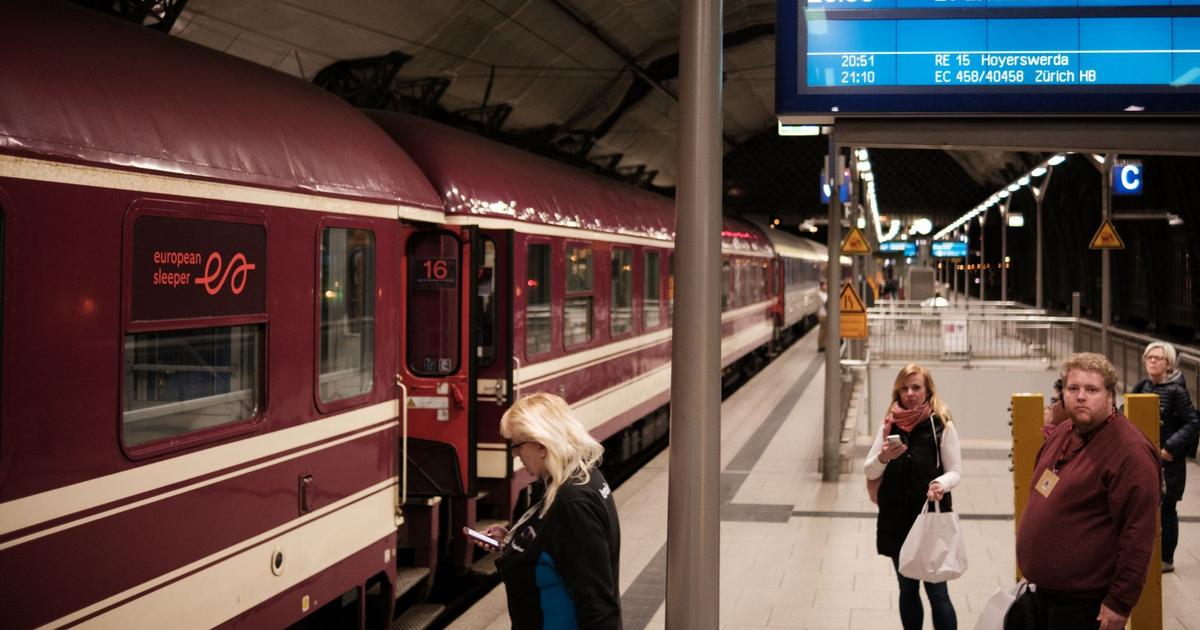Learn about the new routes and prices of the European train 2:09
(CNN) --
Have breakfast in Paris, lunch in Frankfurt and dinner in Vienna, all without the hassle and frustration of flying.
Imagine a network of modern, super-fast and comfortable trains that travel between all the big cities in the European Union, offering a reliable, comfortable and sustainable alternative to air transport.
This is the vision rail industry leaders outlined in Lyon, France, on June 29, as part of ambitious European plans to double high-speed rail use by 2030 and triple current levels by 2050.
Only a massive - and accelerated - expansion of the high-speed network can achieve these ambitious goals, but is it a realistic and affordable proposal?
Unlike many parts of the world, Europe already has thousands of kilometers of high-speed rail.
advertising
Beneath the Great Wall of China is the deepest high-speed train station in the world.
France's world-renowned TGV, Germany's ICE and Spain's AVE have transformed rail travel over the past 40 years, but remain largely focused on domestic markets.
It is no surprise.
When countries invest billions of euros in new infrastructure, political pressure to squeeze the maximum benefit for taxpayers is inevitable.
Building lines across international borders, including within the European Union, creates tensions over who pays for what, how contracts are awarded, conflicting national rules and regulations, and a host of other obstacles.
For decades it has been all too easy to put difficult projects aside until they become someone else's problem.
suffocating bureaucracy
Thalys intercity trains already connect France, Belgium, Germany and the Netherlands.
(Photo: Nathan Laine/Bloomberg/Getty Images)
Even where international high-speed lines have been built - often at enormous cost - national loyalties, stifling bureaucracy and high access fees prevent some routes from fulfilling their potential.
Others, like Paris-London via the Channel Tunnel and Paris-Brussels-Amsterdam/Cologne, are more successful, but could - and should - attract many more passengers than short-haul air travel.
Now, a group of European organizations has committed to a new study highlighting the many benefits of an expanded high-speed rail network connecting national capitals and major cities.
These include the European Commission, the Community of European Railways, the European Rail Supply Industry and ALLRAIL, which represents non-state railways.
Most importantly, the group will investigate how to pay for tens of thousands of kilometers of new lines and how a radical transformation of the continent's rail network can help the EU meet its carbon neutrality target by 2050.
Some of that expansion will be on new routes planned or under construction, but many more will be needed to facilitate the vision of European leaders.
Alberto Mazzola, executive director of the Community of European Railways, told CNN Travel that the group wanted a "master plan" that would show the socio-economic benefits of high-speed connections between major cities on the continent.
Spain has invested heavily in its own high-speed rail network.
(Photo: Jesús Hellín/Europa Press/Getty Images)
"While much has been achieved so far - Paris-Lyon, Milan-Rome, Barcelona-Madrid and Berlin-Munich are national success stories for rail - much more is needed if the ambitious goals of the European Green Deal and the Smart and Sustainable Mobility Strategy," he said.
"If we build it, where should it go?"
And that's where the first round of battles will take place.
Reaching agreement on which routes to prioritize, which cities will benefit (and which will be left out) will spark huge arguments between opposing interests.
Since the shape of the final network can greatly influence the future development of Europe and its cities over the next 100 years, cities will be desperate to claim their right.
While some EU officials have applauded the proposals as the future of sustainable travel in Europe, as long as operators can make it efficient and profitable, others have been more cautious.
Promise too much?
Eurostar trains from Paris to London will not be seamlessly connected to a new north-south high-speed line being built in the UK.
(Photo: Jason Alden/Bloomberg/Getty Images)
"Until I see concrete projects, orders for rail equipment and timetables, I will reserve my opinion," says Jon Worth, an advocate for cross-border rail.
"Unfortunately we've heard it all before and this sounds like the railways are over-promising again. Experience tells us they can't deliver this type of network in the timeframes they suggest."
However, France, Spain and Italy have well-established high-speed rail networks connecting their largest cities, in addition to other lines planned or under construction.
More than any other country to date, France has invested in new links with its neighbours, building international routes to Belgium, the UK, Germany and Spain.
The Lyon-Turin route, which is currently being built, is controversial due to its environmental impact and doubts about its financial viability, but it will add a fast link under the Savoy Alps between France's second largest city and the industrial cities of northern Italy.
The United Kingdom, or more specifically London, remains connected to the European network via the Channel Tunnel, but unfortunately there will be no physical connection between its $118 billion (88 billion) north-south high-speed line 2 pounds), which is being built, and the London-Paris/Brussels routes used by Eurostar.
Located in the center of Europe and sharing borders with nine other nations, Germany will play a key role in any pan-European network.
The German government's "TEE2.0" proposal to restart the aging Trans-Europe Express is an extension of its $88 billion "Deutschland Takt" (regular interval schedule) program, announced in 2019, which aims to provide services fast and frequent intercity rail links between all German cities above a certain size by 2030.
But the biggest benefits could be felt elsewhere, in countries that currently lack high-speed rail.
The Czech Republic is working with the French rail industry to develop new 350-kilometre-per-hour (217 mph) lines that will revolutionize travel times between Prague, Brno and Ostrava, and provide much faster international links between Austria, Slovakia, the southern Poland and eastern Germany.
Faster, greener
Germany has its own network of high-speed Intercity Express (ICE) trains.
(Photo: Adam Berry/Getty Images)
Poland also plans to join the high-speed club with routes planned to run from Warsaw to Lodz, Wroclaw and Poznan.
Extensions to Prague and Bratislava are also planned in cooperation with their neighbors, although these are not likely to materialize until the 2040s.
More problematic are the international routes that cross the Alps or the Pyrenees, natural barriers that have challenged travelers for centuries.
A good example is from Munich in southern Germany to Milan in northern Italy.
These industrial powerhouses are less than 500 kilometers apart, closer to each other than to their respective national capitals, but separated by the Alps.
Slow rail and road connections mean airlines take most of this short-haul intercity business, but faster, more direct trains could shift that share to rail.
When it opens in 2032, the 64-kilometre-long Brenner Base Tunnel between Innsbruck, Austria, and Fortezza, Italy, will cut current schedules by about 70 minutes.
According to EU statistics, 17 of the 20 busiest air routes in Europe cover distances of less than 700 kilometres, exactly the kind of distances over which hub-to-hub trains can offer faster, cleaner and more sustainable travel, if adequate infrastructure exists.
A Paris-Berlin flight generates at least six times more carbon dioxide emissions than a similar journey by train, according to a joint report by environmental organizations from Germany, Poland, Spain and France.
Flights of less than 1,000 kilometers between and within European countries are estimated to generate 28 million metric tons of CO2 per year.
And according to Alberto Mazzola of the Community of European Railways, the carbon emissions market could be a key tool to finance the huge investment needed to complete a high-speed rail network across Europe.
"Total CO2 emissions in the EU are around 3.8 billion tonnes a year, of which more than a billion are from transport. But if we reduce the current carbon allowances for the aviation and road sectors, Additional revenue could be used to fund public transportation improvements.
Excess carbon emissions from planes, trucks and cars are currently charged at €50 per tonne in the EU, but could soon rise to €80 per tonne.
If just 10% of that revenue is reinvested in transport, some €8 billion a year could be added to the fund to improve the railway.
"I have a feeling that there is now a real and positive will to invest in modal shift, but we have to act quickly," adds Mazzola.
integrated networks
France's TGV trains have been providing high-speed services for decades.
(Photo: Jeff Pachoud/AFP/Getty Images)
As important as civil engineering and sleek new trains, technologies such as digital signage, automatic train operation, big data and improved ticketing will be key to perfecting train travel and attracting millions of new passengers.
One of the main priorities of the Community of European Railways is the creation of an independent ticketing platform by 2025, bringing together all available fares and timetables across Europe.
By 2030, this information could be integrated with other transportation modes, offering travelers door-to-door information and fares for their journey, whether it be by train, bus, bike or tram, or a combination of modes.
This level of integration is already common in Austria and Switzerland and, to a lesser extent, in Germany, but in the rest of Europe the quality of information is patchy at best.
Despite the efforts of some governments and state operators, competition on high-speed routes is proving popular with passengers in Italy and Spain, offering better services, higher frequencies and lower fares.
Organizations like ALLRAIL are pushing similar reforms in other EU countries, but progress is frustratingly slow.
"We want to see high-speed trains with 1,000 seats each connecting places across Europe on a regular basis," says Nick Brooks, Secretary General of ALLRAIL.
"This will lead to low fares and high revenues. While other competing long-distance transport modes set themselves 'net zero' emissions targets, rail can do bigger and better. The results of this study should allow high-speed rail to become the backbone of long-distance travel in Europe".
the covid factor
Networked cross-border high-speed trains could replace air travel.
(Photo: Jesús Hellín/Europa Press/Getty Images)
Capacity expansion by building high-speed rail creates more space on existing lines for freight and regional/local trains.
When major highways reached capacity after World War II, countries built highways and expressways.
High-speed lines are the rail equivalent of expressways, carrying faster long-distance traffic and creating space on existing lines.
While sleek high-speed trains grab headlines and attract investment, many more people will benefit directly from the modal shift made possible by improved local and urban rail services, and the transfer of freight from road to rail benefits everyone .
However, carrying out such a vast, ambitious and costly package of new railway projects in more than 20 countries with different priorities and budgets is fraught with difficulties, especially in times as uncertain as the present.
Together, European railways are estimated to have lost more than $52 billion during the pandemic.
Compensation payments from the EU and national governments have so far only covered a fifth of that gigantic hole.
Equally worrying is the estimated 20% drop in regular weekday commuter traffic, which has long been the backbone of rail revenues.
Although long-distance and leisure travel have recovered much more, rail managers fear cuts are inevitable if the gap is not closed.
In addition, the magnitude of the proposals means that it will take many years to carry out the necessary works, even if everything goes as planned.
Financial support from the emissions market and the EU will certainly help in many cases, especially in Eastern and Central Europe, but it remains to be seen whether the European Union can follow China's example in building a hugely ambitious network of high speed in such a short time.
trainsHigh Speed Trains















